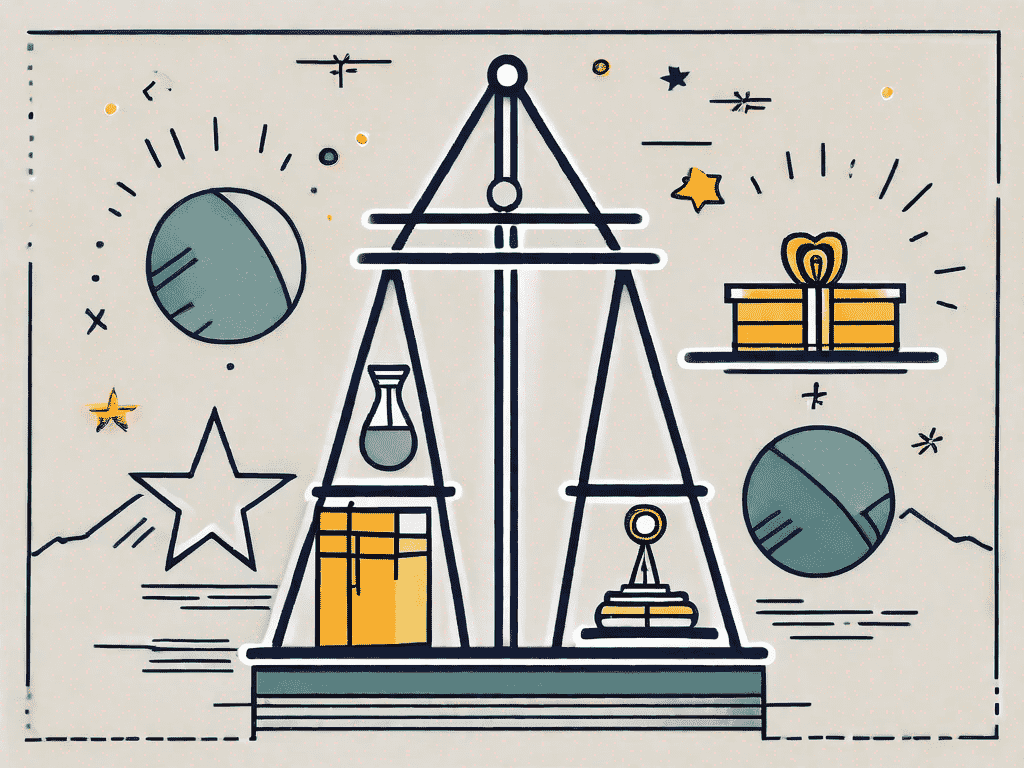
Understanding Incentive Plans for Employee Success
In today’s competitive business landscape, it is essential for organizations to implement effective strategies that not only attract but also retain top talent. One such strategy that has gained significant traction in recent years is the use of incentive plans. These plans, when designed and implemented correctly, can play a pivotal role in driving employee success and boosting overall organizational performance.
The Importance of Incentive Plans
Employee morale and productivity are two crucial aspects that determine the success of any organization. Incentive plans are powerful tools that can positively impact both of these areas, leading to increased employee engagement and motivation.
Boosting Employee Morale and Productivity
One of the primary benefits of incentive plans is their ability to boost employee morale. By recognizing and rewarding top performers, organizations can create a positive work environment where employees feel valued and appreciated. This, in turn, leads to enhanced job satisfaction and increased productivity.
Beyond promoting individual success, incentive plans can also encourage teamwork and collaboration within an organization. When employees know that their efforts will be recognized and rewarded, they are more likely to work together, share ideas, and support one another. This collaborative spirit can lead to innovative solutions, improved efficiency, and a stronger sense of camaraderie among team members.
Retaining Top Talent
Attracting and retaining top talent is a constant challenge for organizations. In today’s competitive job market, employees have more options than ever before. By offering attractive incentive plans, organizations can differentiate themselves from their competitors and increase their chances of retaining their best employees.
Studies have shown that employees who feel recognized and rewarded are more likely to stay with an organization in the long run. Incentive plans can help create a sense of loyalty and job satisfaction, reducing turnover rates and fostering a culture of success. When employees see that their hard work is valued and rewarded, they are more likely to remain committed to the organization and its goals.
Encouraging Teamwork and Collaboration
Modern workplaces thrive on collaboration and teamwork. Incentive plans can be designed to not only reward individual achievements but also foster collaboration among team members. By setting goals that require cooperation and offering rewards that are tied to team performance, organizations can promote a sense of camaraderie and encourage employees to work together towards common goals.
When employees are motivated to collaborate, they are more likely to share knowledge, support one another, and find creative solutions to challenges. This not only enhances productivity but also cultivates a positive and supportive work culture where everyone feels motivated to contribute their best. Incentive plans can serve as a catalyst for building strong and cohesive teams, where individuals feel empowered and motivated to achieve shared objectives.
In conclusion, incentive plans play a crucial role in enhancing employee morale, productivity, and retention. By recognizing and rewarding individual and team achievements, organizations can create a positive work environment where employees feel valued and motivated. Incentive plans not only boost employee morale but also foster collaboration, which leads to improved productivity and a stronger sense of unity within the organization.
Types of Incentive Plans
There are various types of incentive plans that organizations can implement to drive employee success and engagement. These plans can be categorized into three main types: monetary incentives, non-monetary incentives, and long-term incentive plans.
Monetary Incentives
Monetary incentives involve providing employees with financial rewards in recognition of their performance. These can range from traditional bonus structures to profit-sharing programs or even commission-based compensation models.
One example of a monetary incentive is a performance-based bonus structure. This type of incentive rewards employees for achieving specific targets or goals, such as meeting sales quotas or exceeding customer satisfaction metrics. By tying financial rewards directly to performance, organizations can motivate employees to strive for excellence and drive results.
Another form of monetary incentive is profit-sharing programs. These programs distribute a portion of the company’s profits among employees based on their contribution to the organization’s success. Profit-sharing not only rewards individual performance but also fosters a sense of shared ownership and collaboration among employees, as they understand that their efforts directly impact the company’s financial outcomes.
Commission-based compensation models are commonly used in sales-driven organizations. In this type of incentive plan, employees earn a percentage of the sales revenue they generate. This provides a direct link between performance and financial gain, motivating sales professionals to maximize their efforts and drive revenue growth.
While monetary incentives can be highly effective in motivating employees, it is essential to design these incentives in a fair and transparent manner. This ensures that they do not create unhealthy competition or favoritism within the organization. Clear criteria for earning incentives, consistent evaluation processes, and open communication about the incentive structure are crucial to maintaining a positive and inclusive work environment.
Non-Monetary Incentives
Non-cash rewards and incentives focus on providing rewards that are not directly tied to financial compensation. These can include perks such as flexible work hours, extra vacation time, recognition programs, or opportunities for professional development.
Flexible work hours are a popular non-monetary incentive that allows employees to have more control over their work schedules. This can be particularly beneficial for individuals with personal commitments or those who thrive in a less rigid work environment. By offering flexibility, organizations demonstrate trust in their employees’ ability to manage their time effectively and promote work-life balance.
Extra vacation time is another non-monetary incentive that can be highly valued by employees. By providing additional time off, organizations acknowledge the importance of rest and rejuvenation in maintaining employee well-being. This can contribute to higher job satisfaction and overall productivity.
Recognition programs are non-monetary incentives that celebrate and acknowledge employees’ achievements and contributions. These programs can take various forms, such as employee of the month awards, peer recognition programs, or public recognition in company-wide meetings. Recognizing employees’ efforts not only boosts morale but also reinforces desired behaviors and motivates others to excel.
Opportunities for professional development are non-monetary incentives that invest in employees’ growth and career advancement. These can include access to training programs, mentorship opportunities, or financial support for further education. By offering avenues for skill enhancement and career progression, organizations demonstrate their commitment to employee development and create a culture of continuous learning.
Non-monetary incentives can be equally effective in motivating employees, as they cater to individual preferences and offer unique benefits that go beyond monetary compensation. These incentives can help create a positive work-life balance and contribute to overall job satisfaction.
Long-Term Incentive Plans
Long-term incentive plans are designed to provide rewards and incentives that extend beyond the immediate short-term. These plans typically involve stock options, equity grants, or retirement benefits.
Stock options are a common form of long-term incentive that grants employees the right to purchase company stock at a predetermined price. This provides employees with the opportunity to share in the company’s success and benefit from its future growth. Stock options align employee goals with the long-term success of the organization, creating a vested interest in its performance.
Equity grants are another type of long-term incentive that involves giving employees ownership stakes in the company. This can be in the form of restricted stock units or performance-based equity grants. By offering equity, organizations not only reward employees for their contributions but also foster a sense of ownership and commitment to the company’s long-term success.
Retirement benefits, such as pension plans or 401(k) matching programs, are long-term incentives that provide employees with financial security in their post-work years. These benefits demonstrate an organization’s commitment to employee well-being and help attract and retain top talent.
By offering long-term incentives, organizations can align employee goals with the long-term success of the organization, creating a vested interest in its growth and profitability. This can be particularly effective in attracting and retaining top talent, as it demonstrates a commitment to employee success and long-term career development.
Designing Effective Incentive Plans
When designing incentive plans, it is crucial to ensure that they align with the company’s overall goals and objectives. Effective incentive plans should be tailored to the organization’s unique culture, employee preferences, and long-term vision.
Aligning Incentives with Company Goals
For an incentive plan to be successful, it must be closely aligned with the company’s strategic objectives. Organizations should identify key performance metrics and goals that drive success and design incentives that reward employees for achieving these targets.
By aligning incentives with company goals, organizations create a sense of purpose and direction among employees, fostering a culture of continuous improvement and success.
Considering Employee Preferences
Employee preferences and aspirations should play a crucial role in the design of incentive plans. Organizations should conduct surveys or gather employee feedback to understand the types of incentives that are most meaningful to their workforce.
Recognizing individual preferences ensures that the incentive plans are relevant and impactful, providing employees with the motivation and recognition they desire.
Ensuring Fairness and Transparency
Fairness and transparency are essential elements of any successful incentive plan. Organizations should clearly communicate the criteria for earning incentives and the process for evaluating performance.
By ensuring that the incentive plan is perceived as fair and transparent, organizations can maintain credibility, trust, and employee buy-in. Regularly reviewing and updating the incentive plan based on feedback can further enhance its effectiveness.
Implementing and Managing Incentive Plans
Implementing and managing incentive plans requires strategic planning and continuous monitoring. Organizations must effectively communicate the incentive plan to employees, regularly review and update the plan, and address potential challenges that may arise.
Communicating the Incentive Plan
Transparent communication is vital when introducing an incentive plan. Employees need to understand the objectives, criteria, and potential rewards associated with the plan. This ensures that everyone is aware of what is expected of them and what they can achieve through their efforts.
Regular communication and updates about the incentive plan can help maintain employee engagement and motivate individuals to strive for excellence.
Regularly Reviewing and Updating the Plan
An incentive plan should not be static. Organizations should regularly review the plan’s effectiveness and make any necessary adjustments based on employee feedback and changing business needs.
Regular plan reviews and updates demonstrate an organization’s commitment to continuous improvement and employee success. It allows organizations to stay agile and make necessary changes to ensure the plan remains relevant and impactful.
Dealing with Potential Challenges
Implementing incentive plans may pose certain challenges, such as managing expectations, ensuring fairness, and maintaining motivation over time. Organizations should proactively address these challenges and implement strategies to mitigate any potential issues.
By being mindful of these challenges, organizations can fine-tune their incentive plans and develop solutions that promote a positive and productive work environment.
Conclusion
Understanding and implementing effective incentive plans is critical for organizations looking to drive employee success and achieve their overall goals. By recognizing the importance of incentive plans, and adapting them to suit the unique needs of the organization and its employees, organizations can cultivate a culture of motivation, collaboration, and continuous improvement.
Whether through monetary or non-monetary incentives, organizations that prioritize employee recognition and reward are more likely to attract and retain top talent, foster teamwork and collaboration, and ultimately achieve long-term success.


